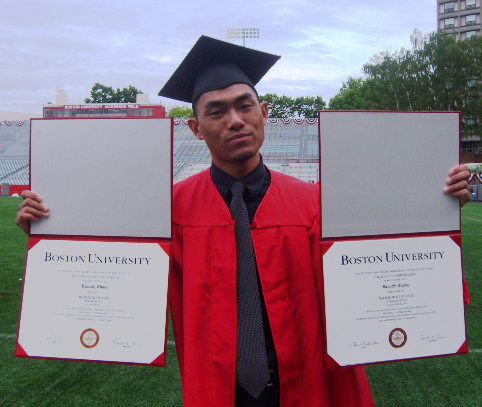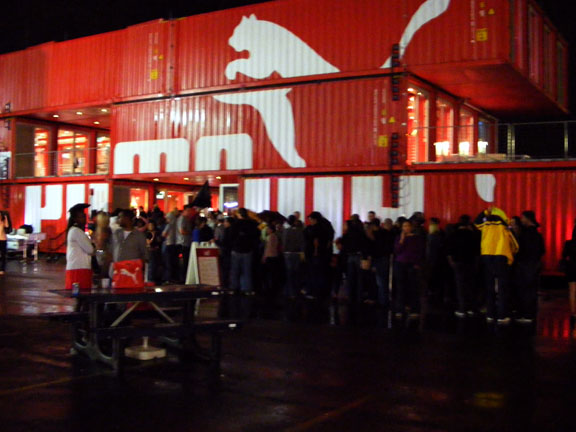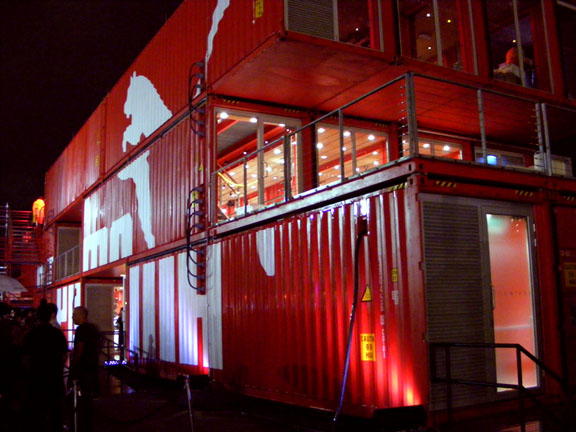The sandwich chain Subway may be solely responsible for the NBC Show ‘Chuck’ staying on the air, speculates this article.
Subway has basically become the official sponsor of the show. Entering into a deal with Subway may deter the cancellation of the spy comedy despite less-than-stellar ratings. And the payoff? Prominently displaying Subway sandwiches within the scene settings and also shameless mentions within the dialogue itself.
Is this the future of product placement?
Well, that’s an inherently flawed question. This sort of hyperreal advertising is already happening in the present. Everyone’s aware that Simon, Paula and Randy (and Kara) all only drink one brand of carbonated beverage. The Transformers movie franchise is the perfect platform for GM’s highly transparent product placement campaign. Viewers of the CW hit ‘Smallville’ can tell you exactly which model of Toyota the show’s characters love to drive and their favorite brand of chewing gum. Even Terminator Salvation, set in a nigh-apocalyptic future, featured a particular SUV blown up by robots. In the scene immediately following the dust settling, viewers had to try hard to ignore the grill of the vehicle on the ground, still proudly displaying the JEEP logo. There was another scene where survivors gathered at a gas station/former convenience store. The camera deliberately panned upward to show a much weathered 7-ELEVEN logo.
Is this the future of product placement?
Will money soon influence art to the degree that the audience will not be able to ignore it? In the age of TiVo and online viewing, commercials have certainly lost their impact. Is the only solution to make TV shows into ads themselves? When do we reach the tipping point? Back when product placement wasn’t as common, it was easy to tell which companies paid to have their goods deliberately placed onto a set. And then it began happening more and it became harder to tell which were the result of natural dialogue (i.e. saying ‘iPod’ instead of ‘mp3 player’) and which were being paid for (ironically, the makers of the Harold and Kumar series did not have a deal with White Castle). So what happens when it becomes too evident that product placement is happening? Will it just stop working altogether? Will viewers resent that brand? Or will they grow to love the product as if it were their own child?
Only time will tell.

Anybody wanna offer me a job?
It was bound to happen. I have joined the TwitterSphere:
http://twitter.com/kennySHARKchung
As soon as I heard about Puma City coming to Boston’s Fan Pier, I knew I had to go. More than a standard pop-up store, it’s an experience. Live DJs on selected nights, dedicated Puma stores, bars, rooftop views- this place has it all.
Why I think it’s awesome: Brand awareness. Puma sure isn’t the biggest dog in the fight, but hell if this doesn’t bring them closer to the forefront. How many times does a person get to see something like this in person? People will have an amazing experience there and associate those good feelings with the Puma brand. And a few sales here and there sure don’t hurt! A wise investment by Puma.
They take it down and bring it all over the world. Be sure to catch it before it leaves Boston on May 16th.
Here are my (less-than-stellar) pics:


Link: A Tech Company’s Campaign to Burnish Its Brand
The NYT article above is about the new ad campaign for Intel created by Venables Bell. It’s only a rebranding campaign in the loosest sense. Intel hasn’t changed their target demographic or what they do. In fact, they probably will never have to (barring some huge unforeseen event). Instead, under the advisement of Venables Bell, Intel is changing the “how” instead of the “what” of their message.
We’ve all seen Intel Inside for many, many years now. People know of Intel, even if they’re not quite sure what the company produces or why they’re important. But the problem is that in modern times, it doesn’t really matter if a computer is equipped with an Intel chip or not. In fact, the only ripple in recent memory in the everlong battle for processor market share was when Apple began offering Intel processors. Let’s face it, nobody will win this war unless one party goes bankrupt. Some people will always buy AMD. Some will always stay loyal to Intel. And others will find the third way.
The point is that when you can’t advertise your product, per sé, you have to appeal to consumer feelings. When that intermediate computer buyer walks into BestBuy and is looking at the specs of all available computers, that Intel Inside sticker has got to incite feelings of warmth and goodness inside that potential customer. It’s simple as that. And the easiest vehicle to achieve that? Humor.
So will this ad campaign be successful? Depends on Intel’s goals. I personally don’t think there will be much change in Intel’s market share (but I also think that a big name like Intel needs to rebrand itself too vehemently), and I highly doubt the minds over at Venables Bell don’t know this. So if their collective goal is to foster good feelings about the brand (as it should be), then how funny and memorable the commercials are will be the sign of success.




